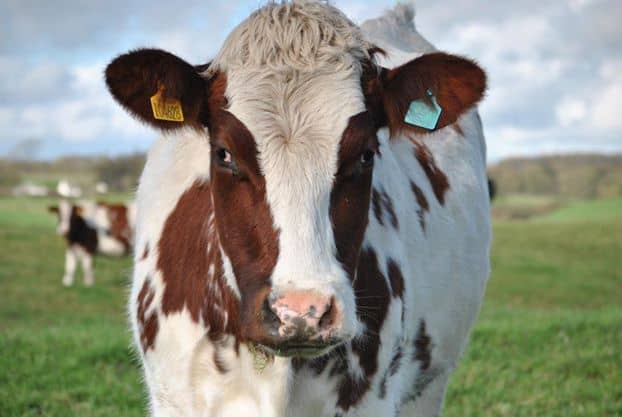Providing one-to-one advice to veterinary practitioners, leveraging big data, and integrated testing in one expert laboratory are at the centre of a new model of animal disease surveillance for farm animals in Scotland.
Announced today (21 August 2019), by Scotland’s Rural College (SRUC), the proposed new model implements the recommendations of the Kinnaird review for farm animal disease surveillance.
A new veterinary hub will be established in Dumfries to serve farming communities in South West Scotland.
At the Dumfries hub, SRUC vets will work closely with veterinary practitioners to investigate animal disease and production problems through modern diagnostic methods. This will use surveillance resource more effectively.
SRUC will continue to operate from the post-mortem facilities from Dumfries. In the long term, the veterinary services team are expected to move to new site as part of the investment in the Barony campus, near Dumfries.
Delivered by SRUC Veterinary Services, the Scottish Government Veterinary Services Programme funds farm animal disease surveillance. This programme identifies new and emerging disease and changing trends in the existing disease patterns as well as surveying antimicrobial resistance.
The other aspects of the model include:
- Integrated testing, technology and expertise in the new £1.6 million SRUC Veterinary and Analytical Laboratory based inside the Moredun Research Institute on the Bush Estate, near Edinburgh. Veterinary practitioners will send samples straight to the Veterinary and Analytical Laboratory
- A new disease intelligence centre to improve passive surveillance using big data. The SRUC disease intelligence unit will help farmers and veterinary practitioners react sooner to disease outbreaks and will better predict where disease outbreaks will occur
- A new veterinary hub model and local advice service available to all regions of Scotland. SRUC vets will work closely with veterinary practitioners to investigate animal disease and production problems through modern diagnostic methods. This will use surveillance resources more effectively and move the focus to animal health and productivity
Post-mortem examinations ceased in the Lothians and Inverness earlier this year, the post-mortem facilities in Ayr and Perth would close by 1 April 2020. The new veterinary hubs would operate locally to cover all four locations.
The post-mortem facilities in Aberdeen, Dumfries and St Boswells would remain in the new model. The post-mortem service in Thurso, which is managed in partnership with a local vet practice, would continue as well.
SRUC has developed the proposed model through engagement with the Scottish Government and the Scottish Government’s Strategic Management Board for disease surveillance. The proposals are made against a backdrop of pressure on budgets and the need for SRUC to find operational efficiencies.
The model will be operational across Scotland by 1 April 2020. SRUC will be investing its own resources to develop the service during the transition period.
The proposed new model would see a reduced number of posts in SRUC’s disease surveillance team. SRUC has entered a period of statutory consultation with colleagues at risk of redundancy or redeployment by these proposals.
George Caldow, Head of SRUC Veterinary Services, said: “The challenge has been to create a new model of disease surveillance that provides the necessary amount of coverage within a reduced budget. This led us to look at how we use technology and new approaches to improve efficiency and proactively look at improving animal production. This model will allow the expertise available within SRUC to be harnessed more effectively for the benefit of all livestock production in Scotland.
“The proposed new model has meant some difficult decisions about the closure of post-mortem facilities. Dairy, beef, sheep and pig surveillance will be supported by at least one post-mortem facility in an area of intensive production. The provision of post-mortem and pathology services will remain an essential part of our surveillance delivery model.
“We look forward to developing a closer working relationship with livestock farmers and their vets that will help promote healthy and productive livestock. The changes will allow us to deliver a disease surveillance service that is appropriate for the needs of livestock farming as it is today and how it must be in the future.”
Sheila Voas, Chief Veterinary Officer (Scotland), said: “The new model for disease surveillance will enable farmers and veterinary practitioners to continue their contribution to the detection of new and emerging infections in animals which is essential for the protection of Scotland’s valuable livestock sector. The new model being put in place by SRUC will ensure that the optimum support is in place to deal with any emerging threats.
“By using resources more effectively, through consolidating and integrating Scotland’s expertise at the new Veterinary and Analytical Laboratory, we will see timely and cost-effective diagnoses which benefits everyone.”
The Scottish Government, SRUC and the Scottish Government’s Strategic Management Board for farm animal disease surveillance will monitor the effectiveness of the new operating model.






